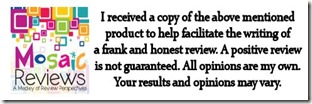For years I’ve struggled with planning and scheduling, using numerous planners, both purchased and self-created, with mixed results. Some challenges in finding something that works is that our homeschool is quite an eclectic mix and our needs change often. For example, some of my kids’ courses are very scheduled, especially outside classes; others are quite relaxed. We have classes that are done daily, weekly, and monthly, with some lasting all year, others a semester, and some for six weeks. In addition, my children approach their school day very differently. One needs a very specific assignment list and schedule, and the other would rather have assignment due dates but not held accountable to an exact schedule each day. As for me, I hate being stuck to a rigid schedule but find that I absolutely need to have some sort of overall planner or I won’t be able to keep it all together.
The Ultimate Homeschool Planner, designed by Debra Bell, is a planning
system. In addition, the parent planner is meant to work *with* the two student planners,
The Ultimate Weekly Planner for Teens and The
Ultimate Daily Planner for Students. Our family had the opportunity to review all three planners, each designed for a particular need, yet they all worked together. I think this is key, at least for our family.
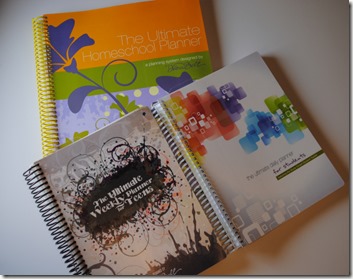
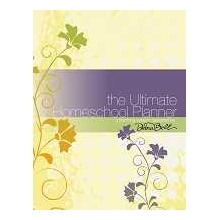
Let’s start with the planner meant for the homeschooling parent,
The Ultimate Homeschool Planner. First of all, I simply like the feel of this planner. It has a large spiral and it easily lies flat and open. The cover is plastic and has some substance, yet is flexible. The planner is significant in size so it won’t get lost, but it isn’t bulky. The covers also have pocket folders, perfect for those I’m-not-sure-where-to-put-this-but-it-is-important-to-have-nearby items.
The content is a nice balance of instruction and inspiration with useful recording and planning pages. The beginning pages teach the parent how to purposefully plan, starting with a big picture of goals and time commitments, and bringing it down to how that looks at a daily level. The parent is walked through a Yearly Planning Retreat, Monthly Planning Sessions, Weekly Planning Breaks, right down to Monday Morning Tutorials and Friday Afternoon Reviews with all the appropriate forms. Being a highly visual person, I love, love, love the pages showing how completed planning pages might actually look, including the student planners.

The bulk of the planner consists of monthly and weekly planning pages for one calendar year. Each month is a two-page spread, with the dates blank so you can begin to use the planner at any time of the year and be able to fully utilize it. The weekly pages consist of two full page spreads. The first is a grid of six blocks across and six down. There is also a section in the margins for notes, supply lists, and appointments. The next weekly page spread is more for purpose and reflection. They include sections for recording Bible study and focus, prayers, outreach, memorable moments and “evidences of grace” each week. The best feature of the weekly page is flexibility; the rows and columns are not labeled. It took me a couple of tries to figure out what worked for me, but I eventually came up with a personalized system. I need very detailed plans or I will forget some important tasks. Therefore, allotting a block for a day’s work or a subject’s assignments was simply not working. Instead, I drew a line down the middle, giving each child three rows and
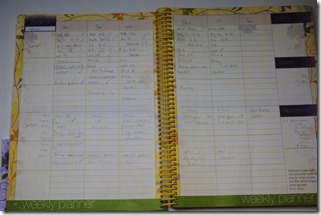
six columns. I wrote the days across the top and used three blocks for each day’s work, keeping the order of subjects consistent. This way I could include appointments and activities as well. It wasn’t pretty, but the important part is it worked. Having a detailed week’s plan for both children on a two-page spread was just what I needed. I’m still tweaking my system. Since my youngest usually doesn’t need as much space, I’m thinking of adding a row in the middle for my activities and appointments as well.
The remaining pages contain forms to record grades, reading lists, year-end review notes along with several teaching tips articles.
Check out the available copy of the
Table of Contents and a
Planner Sample for a better idea of the structure and layout.

My kids used two different planners. My daughter used
The Ultimate Weekly Planner for Teens. After a couple of year overview type pages and then twelve monthly pages, each week is provided a two-page grid plan with the days across the top and blank column boxes. Each box also has two segmented circles representing an hour each, allowing the student to keep track of on task time in 15 minute increments. The student planners are about half the size of the parent planner, which was preferable to my daughter. However, she found she didn’t quite have enough room to write all her assignments fully. There are only five rows with which to work, requiring some grid boxes to contain more than one subject. My daughter relied on abbreviations and I kept more detailed information in my own planner. The last 35 pages are devoted to grade records, an activities log, credit tracker, general study information, college application planning and notes.
My daughter’s past success rate with planners has been similar to mine. She simply hasn’t been able to find one she’ll consistently use. I also have a difficult time balancing giving her freedom and micro-managing when it comes to her schedule. Most of my daughter’s work is either outside classes or independent study. If I give too much freedom, I become very out of touch of what assignments and projects she has coming up. This means I can easily overschedule her with other activities and she can also get in too deep too quickly if I am not overseeing. On the flip side, she resents me structuring her exact daily activities. With The Ultimate Planners, we’ve been having a weekly meeting were we decide together her goals and daily activities for the week. This keeps me in the loop and ensures we are on the same page, in addition to allowing me to guide unrealistic time expectations or help prioritize. I then have a reference in my own planner in order to check in with her throughout the week.
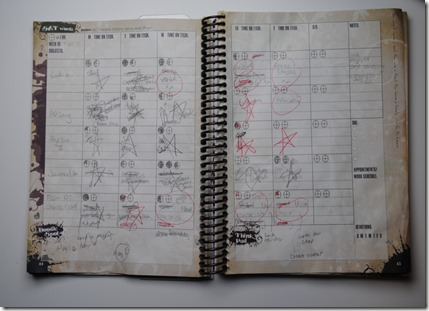 |
| It looks a mess, but this planner really does keep her organized. Items are starred upon completion. The circled items are those still needing completed that may have gotten bumped in the schedule. |
Take a peek yourself by checking out the
14-page sample of the teen planner.

My son used
The Ultimate Daily Planner for Students. Even though he is a teen and the planner was designed for elementary and middle school kids, this planner has been a great fit for him. In fact, he has seen become very reliant. It has surprisingly created a focus and consistency in his work he didn’t have previously. The format of the weekly planning pages is more a checklist style. Each day has eight lines for assignments with “done” and “approved” columns. My very linear thinker loved the straightforward schedule in addition to being able to see a week at a time. I keep the order of subjects very consistent and he has developed a routine for completing his work. I used to give him a daily check list, but having the whole week written out in daily increments has been much more effective for him. It gives him the big picture he needs without overwhelming him. I am quite impressed with how focused he has been in completing his tasks for the day. In fact, if I neglect to have the day’s assignments written in, he badgers me in the morning until I complete his planner. I can see how he will easily transition to the teen planner and begin creating his own schedule after using this one for a while. The remaining pages are similar to the teen planner, minus the college preparation pages. (Note: The spiral binding on this planner glows in the dark!). This planner is a huge success story for my son! If you have older kids who need something different than the teen planner, I would not hesitate to give this one a look.
 |
| My kids' different personalities are quite obvious by looking at how they use their planners. This is my linear, "just give me a list to complete" child. |
A
sample of the student planner is available for a closer look.
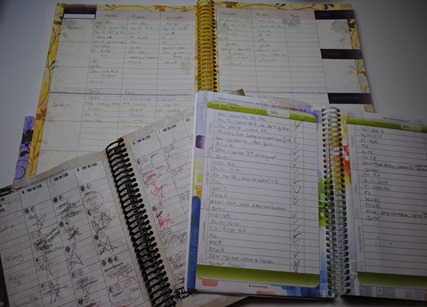 |
| These planners are each different, yet work together as a system. |
While I’m not utilizing this planning system fully yet, I am consistently using it with success. It is not intimidating and is fairly flexible. Furthermore, it has plenty of tools, should you decide to use them, but the function of the planners is not dependent upon them. The fact that the planners all work together yet serve different needs it the greatest benefit.
The Ultimate Homeschool Planner is available for $28.
The Ultimate Weekly Planner for Teens and
The Ultimate Daily Planner for Students are both available for $19 each. All three planners can be
purchased through Apologia.
